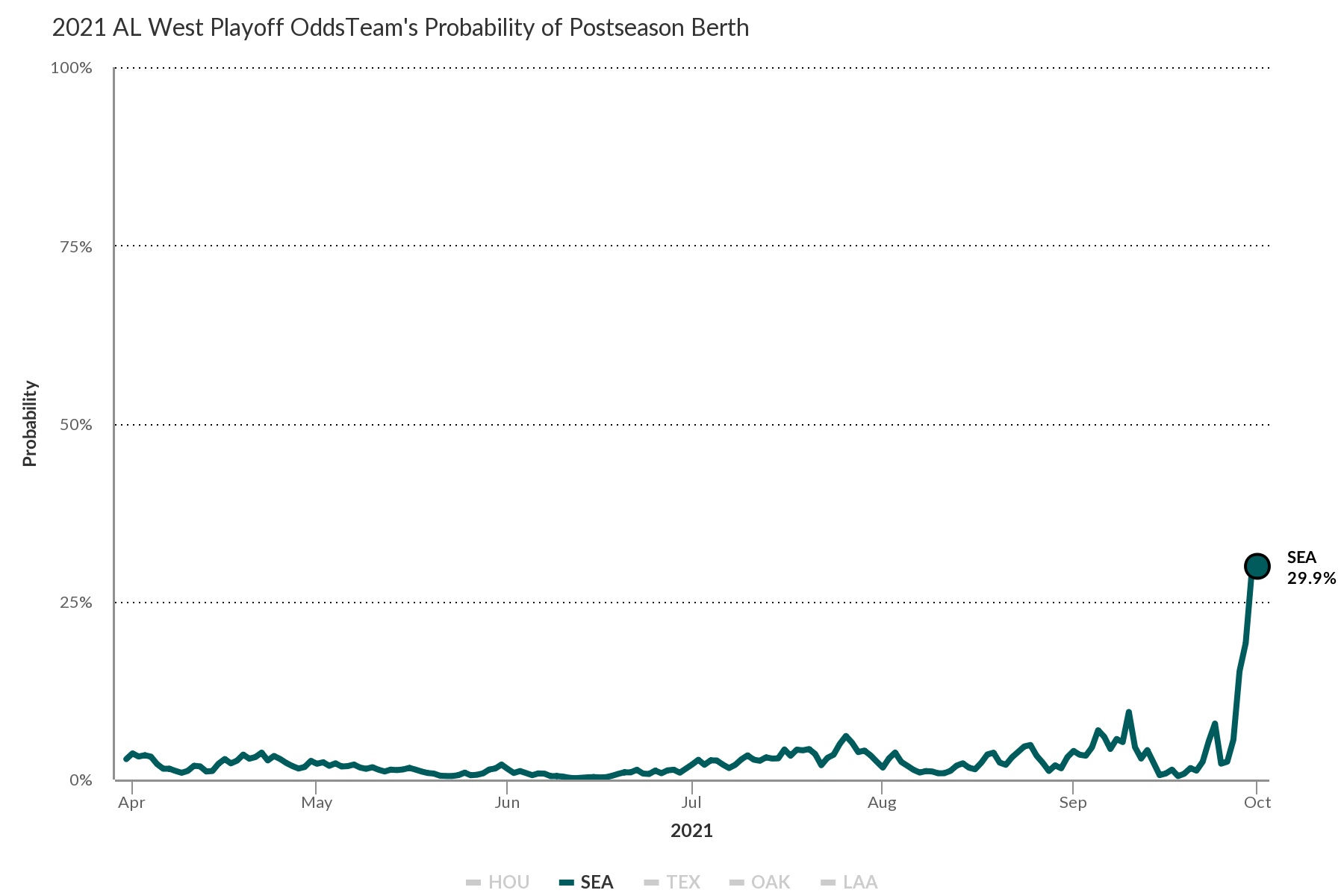The Unsung Heroes of the Mariners’ September Surge
The Mariners are entering the final weekend of the regular season with their best shot since 2016 at breaking their infamous postseason drought, having gone 18–8 in September and won 11 of their last 13 games after losing a crucial series to the Red Sox mid-month. Earlier this morning, Jay Jaffe took a look at the bigger picture for the Mariners, their negative run differential, and the historic positive turn of their playoff odds. But this climb up the standings wouldn’t have been possible if it weren’t for some unheralded performances by a number of players on their roster.
From a season-long perspective, the Mariners’ offense has been lackluster, with a wRC+ of 94, ranking tenth in the American League. That went up to 103 in September, but the driving force behind the improved offense has been excellent performance in tight situations. Seattle has the most clutch offense in recorded MLB history (WPA records only go back to 1974), which goes a long way toward explaining the team’s 33–18 record in one-run games this year.
Clutch hitting can take a team far, but it’s not something that can be counted on every night. Luckily, the core of the Mariners’ lineup started hitting extremely well during the final month:
| Player | PA | BABIP | ISO | wRC+ | Clutch | WAR |
|---|---|---|---|---|---|---|
| J.P. Crawford | 123 | .340 | .162 | 138 | 0.15 | 1.1 |
| Mitch Haniger | 117 | .277 | .288 | 139 | 0.16 | 0.7 |
| Jarred Kelenic | 106 | .262 | .295 | 135 | 0.64 | 0.7 |
| Ty France | 114 | .338 | .104 | 130 | 0.14 | 0.6 |
| Luis Torrens | 68 | .412 | .186 | 119 | 0.27 | 0.2 |
| Kyle Seager | 107 | .224 | .186 | 80 | 0.67 | 0.1 |
After shuffling through a number of early-season contributors, the lineup stabilized after the All-Star break — something that coincided with Kelenic’s second call-up from Triple-A after his rough debut in May. The hits didn’t start falling immediately after his return to the majors; from July 16 through the end of August, he posted a .181/.263/.315 line (a 65 wRC+) with a 30.5% strikeout rate. But something clicked once the calendar turned over to September, with Kelenic hitting .242/.321/.537, good for a 135 wRC+. His strikeout rate dropped to 25.5%, he launched seven home runs, and more than half of his hits went for extra bases.

